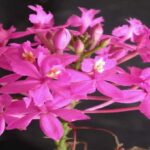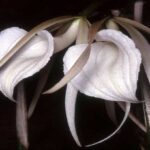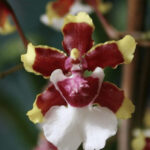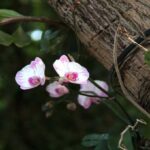The Ansellia africana is the only orchid of the Ansellia genus, but it wasn’t always this way.
This species was discovered by John Ansell, an assistant to the botanist John Lindley, and it was published in 1944 in The Botanical Register by John Lindley.
A few years ago, this genus contained five more species, but over time, it was realized that these were just varieties of the same plant.
This mistake happened due to the wide variety of flower shapes and colors.
There used to be:
- Ansellia gigantea
- Ansellia humilis
- Ansellia nilótica
- Among others
And today, they have been transformed into varieties of Ansellia africana:
- Nilotica variety
- Nigra variety
- Black Darkness variety
To learn more about this species, its characteristics, interesting facts, and how to cultivate it, keep reading this article.
Characteristics
Ansellia africana is a medium-sized plant and, in some cases, can be large.
It usually reaches about 19.7 inches (50 centimeters), but in some varieties, it can grow over 3.3 feet (1 meter).
It is an epiphytic orchid and, in some cases, terrestrial (ground orchid), and as the name suggests, it is an African orchid.
Since they are mainly epiphytic, Ansellia has aerial roots, and one thing you should remember is that their roots are naturally white.
In other orchids, white roots can indicate a lack of water, but not in Ansellia.
You can find this orchid in its natural habitat on dry coasts near rivers, usually on tall trees.
It is important to note that they live in very dry areas.
Curiosities and Extra Information
Also known as the leopard orchid, Ansellia can be found in the following countries:
Found in Ghana, Guinea-Bissau, Ivory Coast, Liberia, Nigeria, Burundi, Central African Republic, Cameroon, Congo, Equatorial Guinea, Gabon, Gulf of Guinea Islands, Rwanda, Zaire, Sudan, Uganda, Kenya, Tanzania, Angola, Malawi, Mozambique, Zambia, Zimbabwe, Botswana, Namibia, Natal, Swaziland, and Transvaal South Africa along the hot coasts and rivers to elevations of 2200 meters, but usually below 700 meters. ORCHID SPECIES
Many people confuse this genus with Cyrtopodium.
This is because they live in very similar habitats, and over the years, they have evolved and become more alike.
In addition to being an orchid used for decoration, in some African regions, this plant is also used for medicinal purposes, such as:
- Curing children’s coughs
- Inducing vomiting (not sure why)
- Preventing the ex-lover from having children
- Curing madness
During my research, I found this scientific article discussing the medical benefits of this plant.
If you want to know if these recipes really work or learn about other medicinal benefits of this plant, click here.
Flowers
The flowers of this orchid were the reason for so much confusion regarding the species.
There are various shapes and colors that can be found in nature, but they are usually quite similar.
The flowers have a diameter of between 1.97 and 2.36 inches (5 to 6 centimeters) and can last up to 15 days.
They appear at the end of the stem and are somewhat yellow with spots.
These spots can have various shapes and colors.
Flowering usually occurs after winter or during the summer, resulting in about 20 flowers.
Cultivation of Ansellia Africana
This is a straightforward plant to cultivate.
It is very resilient, and if you live in a region with higher temperatures, this is the ideal choice.
Ansellia africana thrives in warmer temperatures, and during the winter, its watering should be reduced.
Below, I’ll explain a bit more about these factors.
Humidity
The humidity should be moderate, not too high or too low.
The recommended range is between 65% to 75%.
Remember that humidity is essential for preventing diseases and keeping your orchid healthy, so provide a suitable environment for your orchid.
Light
Like the golden rain orchids, Ansellia loves plenty of light.
Ansellia should have ample exposure to light, but always in a diffuse manner.
To ensure that you are doing this correctly, observe its leaves.
If they are yellowish, you are doing it right.
But remember, this rule applies only to Ansellia; in other orchids, yellow leaves indicate too much sun.
If the leaves of Ansellia africana are yellow, it will have an excellent flowering.
Potting mix
The potting mix depends a lot on where you will cultivate your orchid.
For example, if you choose to grow them on a tree, you don’t need to add potting mix.
But if you grow them in a pot or basket, it may be necessary.
The soil for Ansellia should have excellent drainage and, most importantly, provide good aeration for the roots.
Therefore, some of the recommended potting mixes are:
- Charcoal
- Gravel
- Peat
- Pine bark
- Among others
And remember, replanting should occur as soon as the potting mixes start to deteriorate.
Watering
Watering is the most complicated factor when it comes to cultivating this orchid.
This is because, in their natural habitat, they go without water for a long time, so at home or in your garden, you will have to do the same.
Basically, during this orchid’s growth period, it should be watered after the soil dries out.
During other periods, you should reduce the amount of watering.
During winter, you should significantly decrease how often you water your plant.
Water from time to time and, if possible, only spray it with water.
This dry period during winter is necessary for Ansellia to bloom.
Where to Cultivate
Ansellia is an epiphytic orchid of medium or large size, so it is recommended that you grow it in one of the following places:
- Trees
- Cache pots
- Hanging baskets
- Deep pots
Avoid shallow pots, and do not plant it in the ground.
Choosing the right location will greatly help when cultivating your plant.
Temperature
Lastly, the temperature.
This orchid lives in warm places and is not accustomed to cold weather.
Therefore, it is ideal for people living in warmer regions.
It prefers higher temperatures during its growth period, and during its rest period, the temperature should decrease slightly.
Conclusion
This was the article about the Ansellia africana orchid. If you have this orchid or plan to get one, leave your comment below.
Your opinion is very important to us.
If you want to continue learning about orchids, I recommend checking out these articles.
- 12 Rare Orchids You’ve Never Heard Of
- 22 Little-Known Brazilian Orchids (Photos and Curiosities)
- Amazon Rainforest Orchids: 12 Of The Most Stunning Species
Thank you very much for reading this far. Help us reach more people by sharing this article on your social networks.

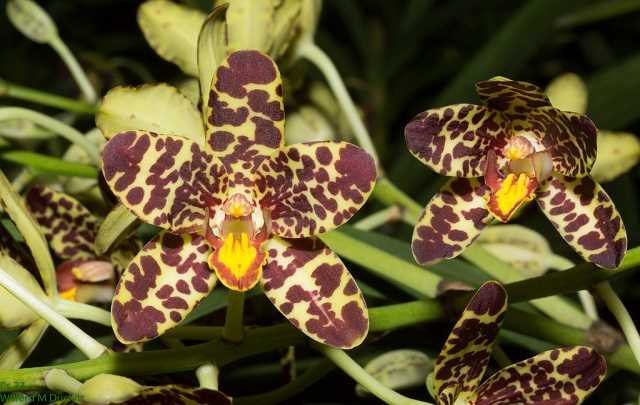
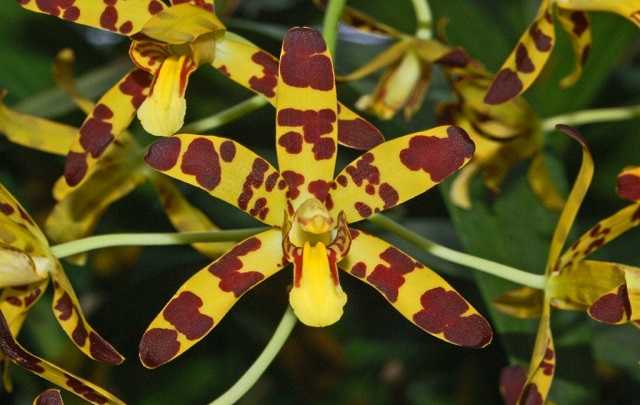
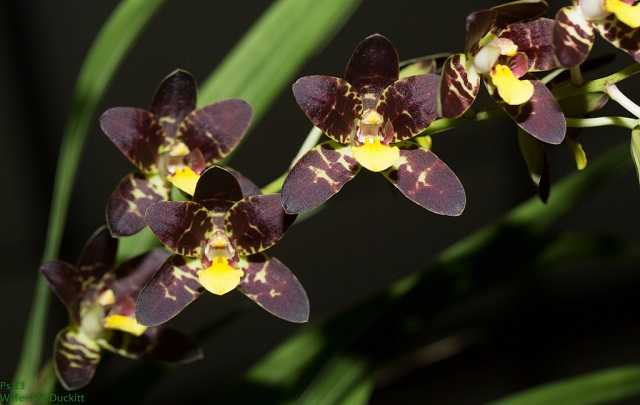
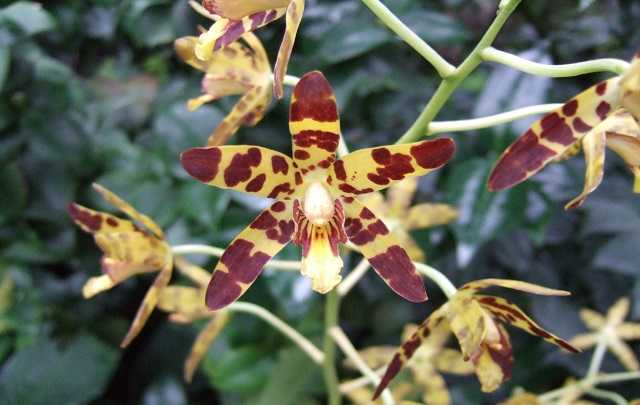
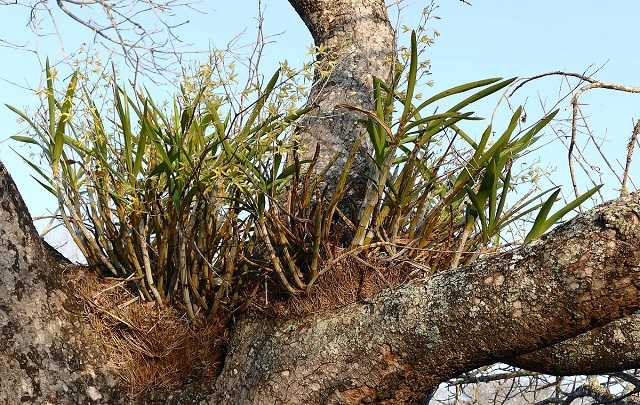

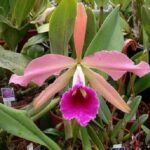

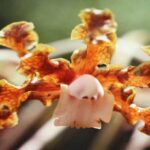
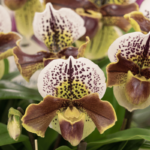
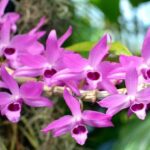
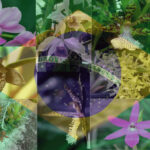
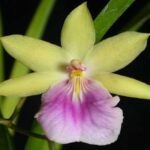
![How to Make an Orchid Bloom [Beginner's Guide]](https://planticulous.com/wp-content/uploads/2023/10/How-to-Make-an-Orchid-Bloom-featured-image-150x150.jpeg)
